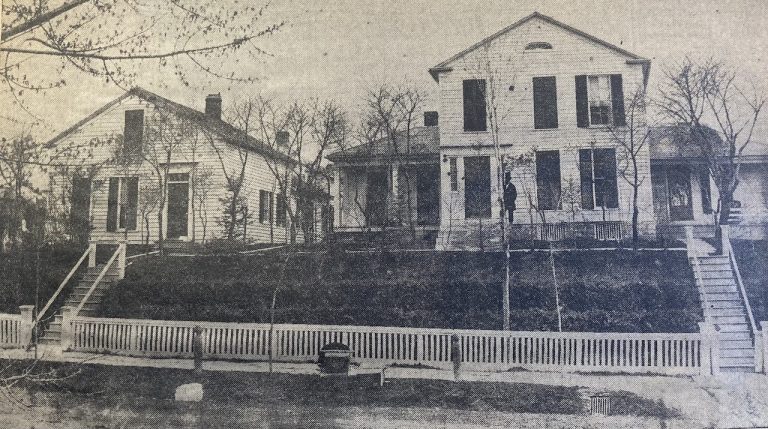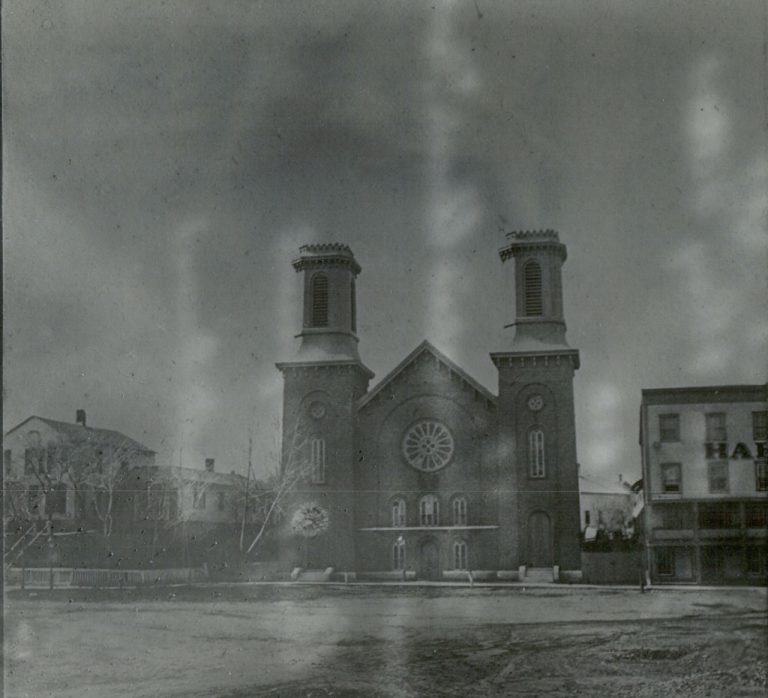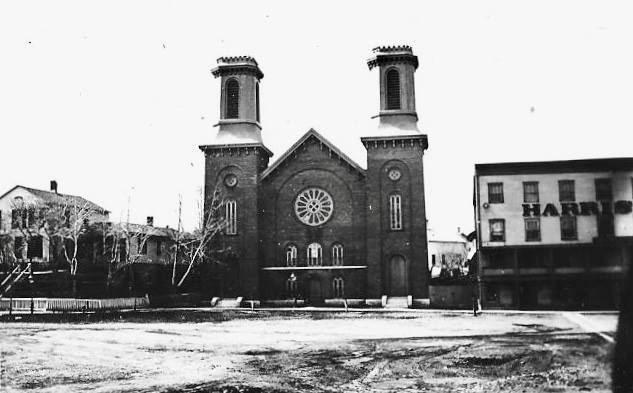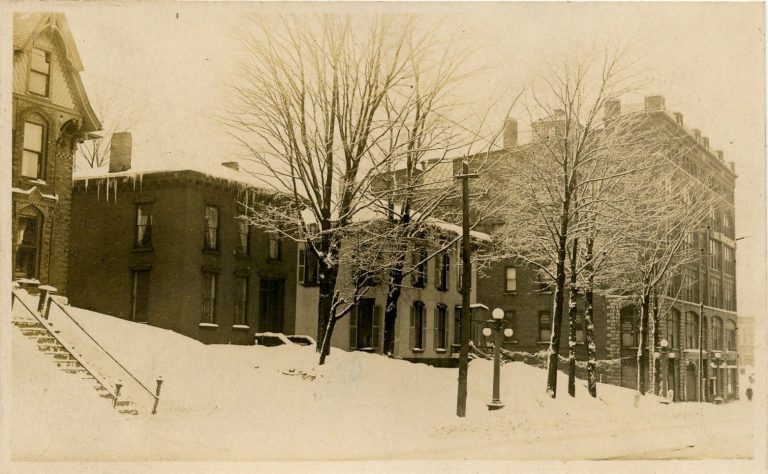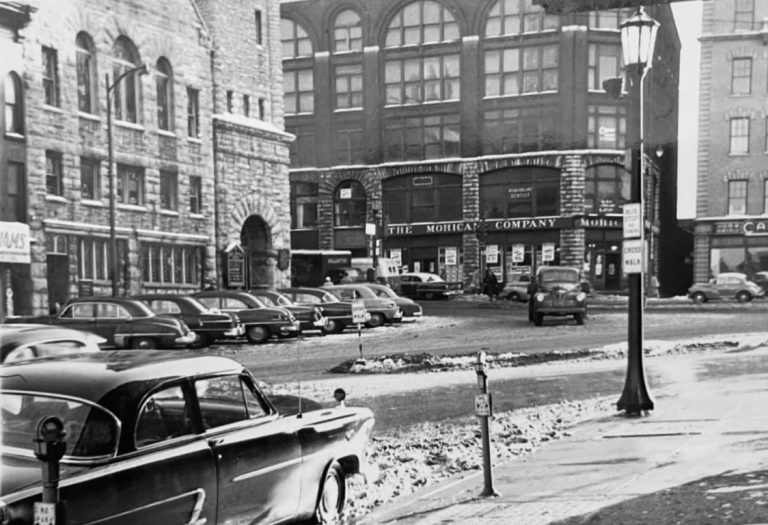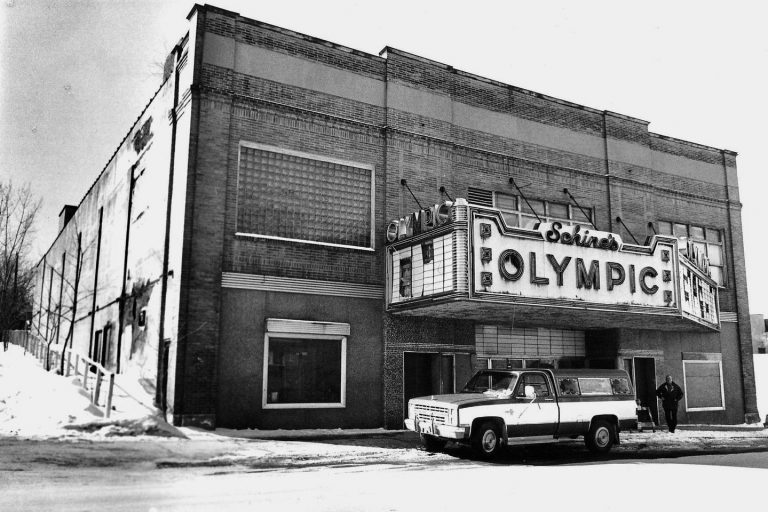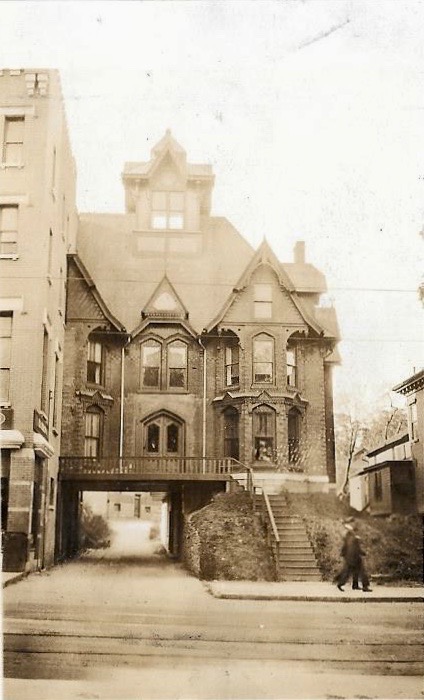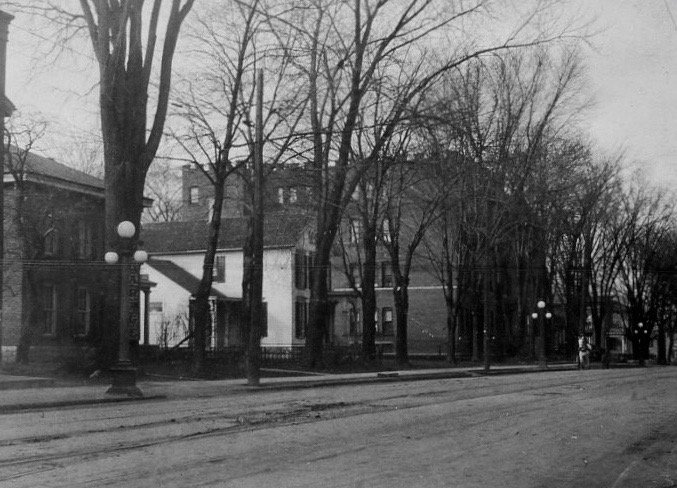Lower State Street Was Once Prime Real Estate
If one weren’t given the addresses of 2 and 4 on lower State Street, they most likely would have no idea where the two houses in the photo below were located. That’s how much the topography of the area has changed over the years to its current condition: part parking lot and partly occupied by the Henry Keep Apartments.
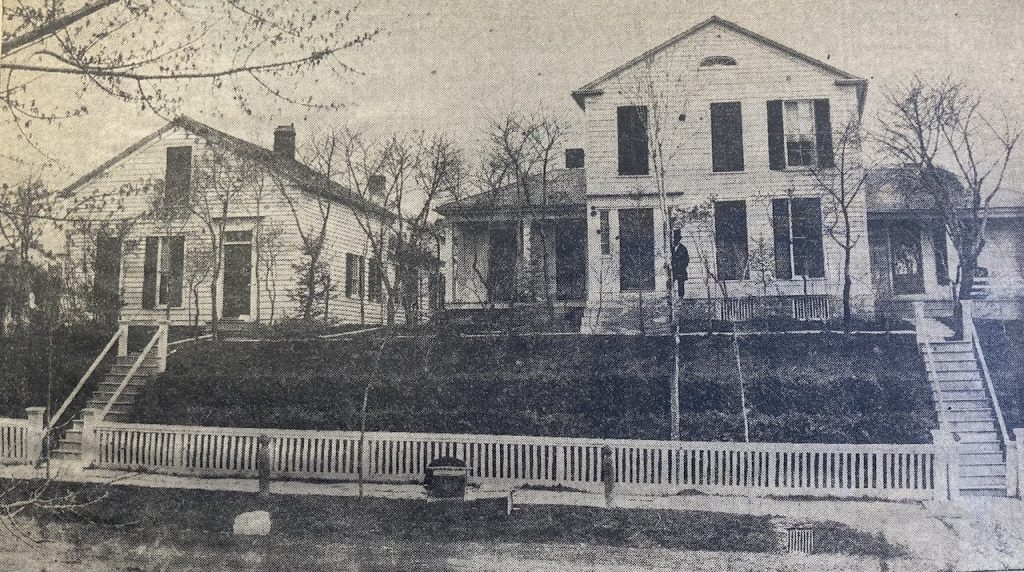
The two houses were most likely built in the 1850s as that was the year the Universalist Church neighboring it in some of the photos was constructed. The previous church, built of wood and stone in the 1825, would burn, though reports differ, from the same source no less! The Growth of a Century, by John A. Haddock, stated that a fire on Sterling Street caused shingles to waft in the air, one apparently landing in the church’s steeple and causing the fire.
The more likely scenario, printed later in the very same book, read “The first edifice of the Society was built of stone, which took fire in the steeple from the burning of a neighboring house, in 1850, and was utterly destroyed.” Nevertheless, The Growth of a Century did give an account of the landscape of the area back in 1825 when the first church was built–
There were bluffs at both the west ends of the park (square). The ground at the American corner and on the upper end of Court Street was six or eight feet higher than present; the corner where Washington Hall stands was a dozen more more feet higher and the ground where the Baptist and Universalist Churches stand was on level with the Peck place.
When the Square was filled, those who attended the church had to climb forty-nine steps. People went up from each side on a circle. The hill at the east end of the Public Square was at an early day occupied by Clark Rice as a dwelling.
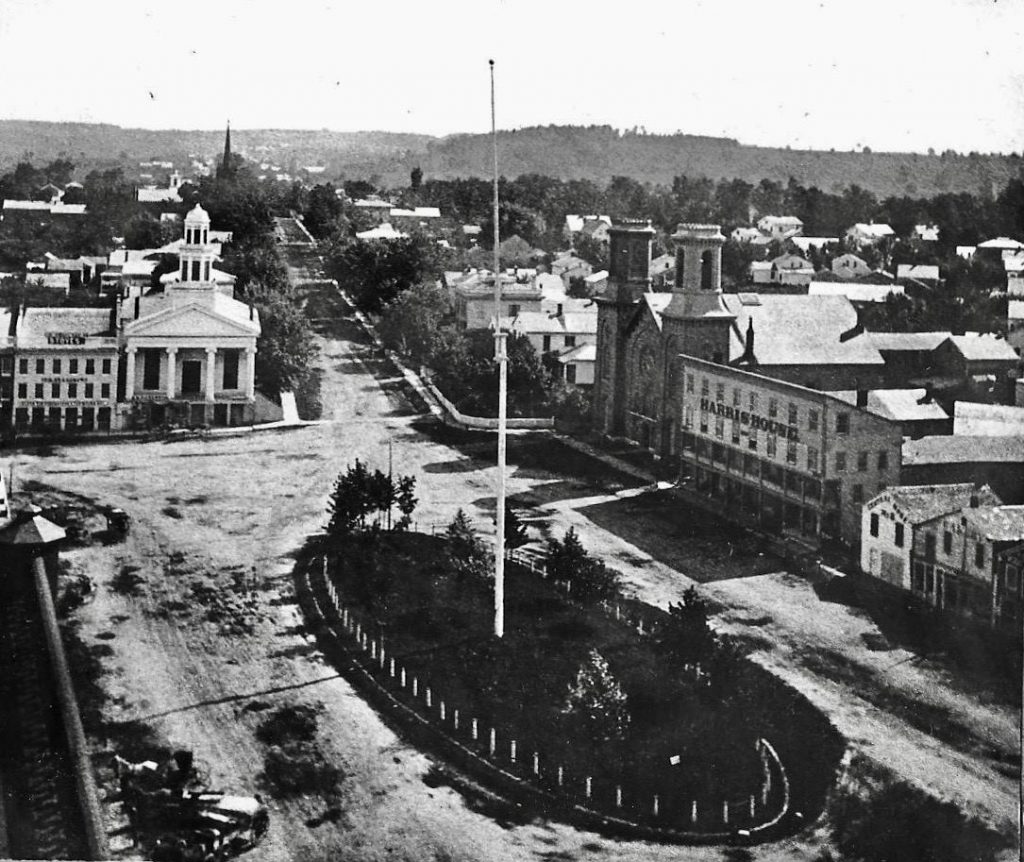
According to the Watertown Daily Times, at the time of the 1869 photo, the residence on the left was occupied by George Scobell, originally from Kingston, Ontario, who had operated a lager and ale business on River Street. The larger of the two residences on the right was occupied by R. W. Sherman, but within a few years would become a boarding house.
In 1879, the two houses would see “Solomon’s Temple,” the mansion of Solomon Hadcock, built in the same block just a couple of houses down. The huge mansion was said to have been perhaps the highest point of a building in Watertown at the time as it, too, was built upon the same knoll. In later years, the Salvation Army’s Citadel building would abut the so called temple after 1/3 of it had been removed. Adding insult to injury, Solomon’s Temple would have a roadway cut out underneath it to address the city’s concern of adding another means of egress from Franklin Street to lower State Street.
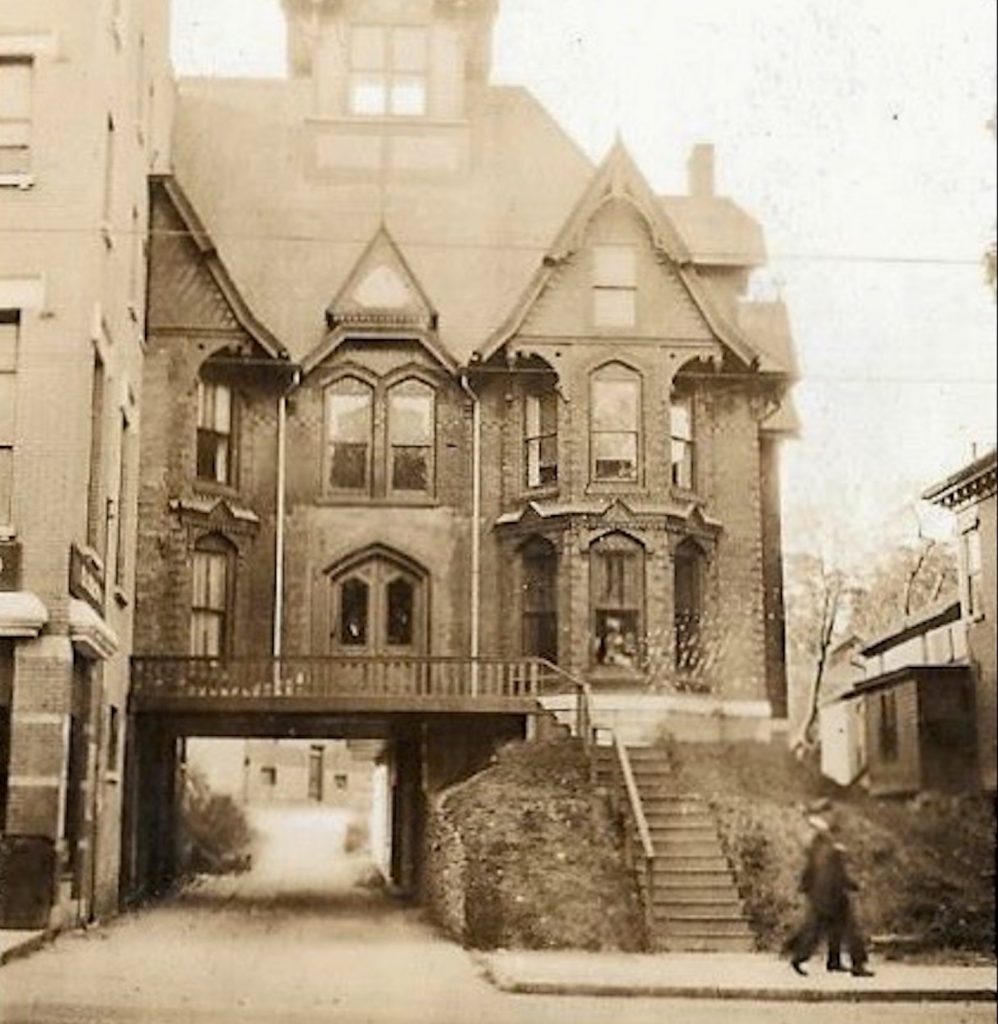
In 1890, W. H. Smith would purchase the two properties at 2 and 4 State Street and have them razed, the land excavated and leveled to match the rest of Public Square. Once that effort was completed, the construction of the Smith Block would ensue and be completed in 1891. Later known as the Mohican Building, the five-story structure became home to the Northern Business College as well as numerous businesses. Built at the same time across from it was the First Baptist Church, the two making for a grand entrance to lower State Street.
Once the Universalist Church moved to its new location on Washington Street and became All Souls Universalist Church, the old facility would be razed for the construction of Hotel LeRay, better known in later years as the Electric Building, making the beginnings of lower State Street almost cavernous.
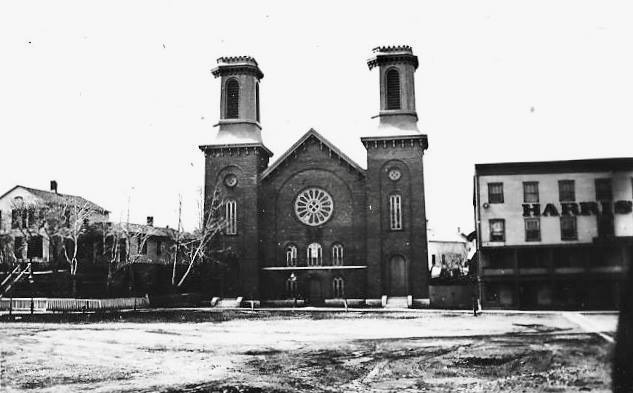
Around 1916, the two residences between the Smith Building as it was still known as, though owned by Byron B. Taggart and the widow of Charles H. Remington at that point, would be purchased, razed and the land excavated and leveled for the construction of the Olympic Theater which would open the following year.
Eleven years later, in 1927, the remaining two-thirds of Solomon’s Temple would be torn down and the last bit of knoll remaining which supported the mansion leveled even with State Street and Armstrong Place. The Eleanor Diner would move to its new location in the vacant lot from Court Street later that year.

Today, lower State Street is hardly recognized for being a place that once was buzzing with the activity of a well-frequented diner, movie theater(s), school, bakery/grocery and numerous businesses that made it prime real estate nearly 100 years ago. The synergy that could be found at that corner wasn’t something that was so much as planned, but rather happened with one establishment leading to another’s wanting to be in the same vicinity to draw upon the traffic. Hopefully, some of the new, and old, businesses like BCA Architects & Engineers moving into Public Square in 2021/2022 can provide the same kind of effect.
